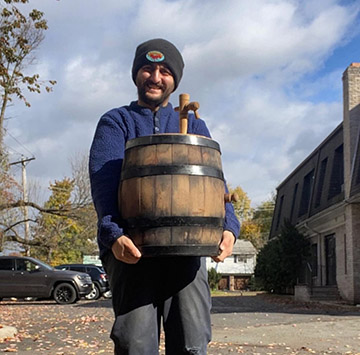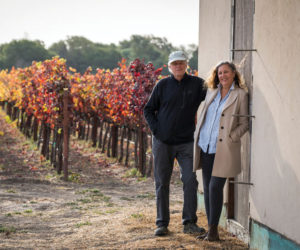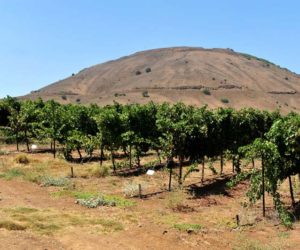
We grew up in a household rooted in Italian immigrant values, one of which has been the concept of doing things ourselves. Winemaking has been in our family for over 100 years through our great grandpa, Carissimo, and our grandpa, Mastrolia, both of whom were paisans who loved their wine. Our father, John, has continued this winemaking tradition and passed it down to us and our other brother, Marc.
Wine is a complex beverage that is the product of many variables in its cultivation and production. Another beverage that shares these characteristics — which may even be considered wine’s antithesis — is coffee. The flavors of coffee are determined by the region of growth, the coffee species used, the way the beans are fermented, and how the coffee is roasted and brewed. The coffee world even has its equivalent to Sommeliers, known as Q-graders. While wine is often viewed as a symbol of class, to many, coffee is just coffee — a utilitarian beverage we use to get us ready for the day. John Paul, the man behind Cozz Coffee, tries to change that perception by enhancing the way others think about coffee, especially winemakers!
John Paul centers his coffee roasting on creative expression, just like our winemaking. These parallels led us to an overriding question — what happens when you combine coffee and wine? In the past, we had drank coffees infused with whiskey, and there are plenty of coffee beers, so the idea didn’t seem too crazy. John Paul took the lead on this project. His first attempt resulted in moldy coffee beans. The second try tasted like a glass of wine poured into a cup of coffee. The third made him realize this does not work with white wines, and on the fourth attempt he was finally onto something when he used a red blend of Grenache, Alicante, Old Vine Zinfandel, and Muscat, the “Paisano Blend” passed down from our great grandpa! He realized through experimentation that when the raw coffee and wine had direct contact, the flavors clashed and there was a high risk of mold. Soaking an oak barrel in a red wine blend and allowing the wood to dry out, the barrel can impart some of those wine flavors in a more subtle manner.
From there came the easy part: Filling the barrel with raw coffee beans and storing. When determining a coffee to use, we wanted to go with something that catered to a dark roast profile, as darker coffees tend to have a smokier chocolate flavor that goes hand-in-hand with the deep, dry flavors of our red wine blend. The coffee chosen was a Papua New Guinea, and it was stored in the barrel for one month before being roasted. The end result was similar to that of a chocolate-covered berry — rich and dark with a fruit-like quality. Thus, the Drunk Paisan Blend was born; a unique coffee experience with a rich history rooted in family tradition.
The easiest way to try this at home is by purchasing raw green coffee and oak chips. Soak the oak chips in wine for at least 24 hours and allow them to dry out fully. Combine the oak chips with raw coffee and store for one month. Remove all oak chips and cover the bottom of a heated cast iron pan with the raw coffee. Continuously whisk beans around until they are a dark color (make sure you have a ventilation fan or a window nearby as this will get smoky). Allow beans to cool and enjoy your “Drunk Paisan” coffee in your preferred brewing method!






